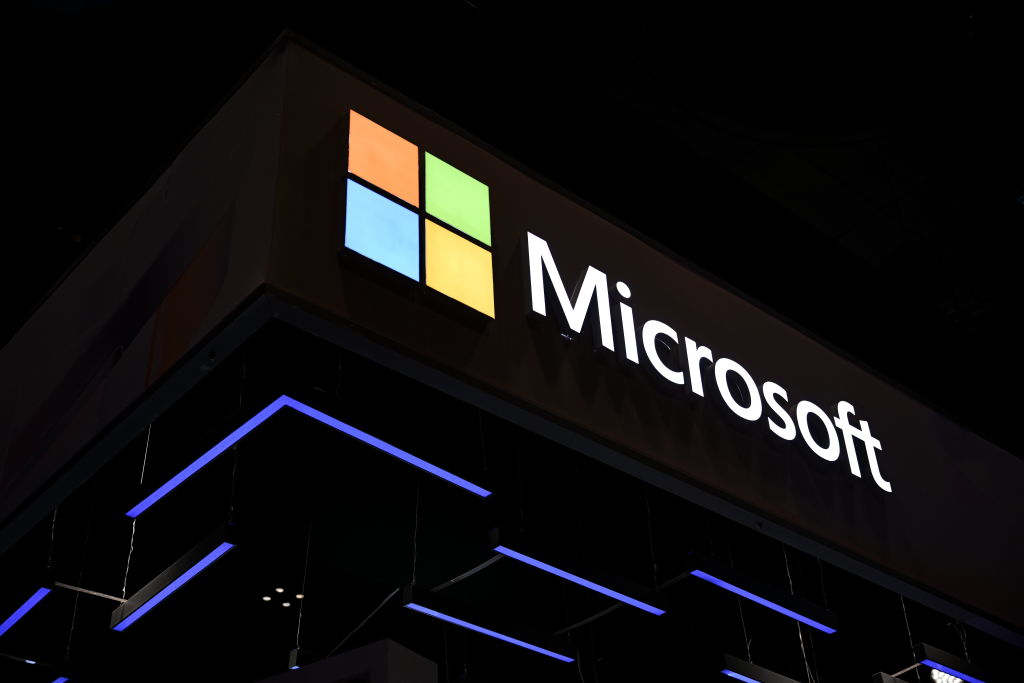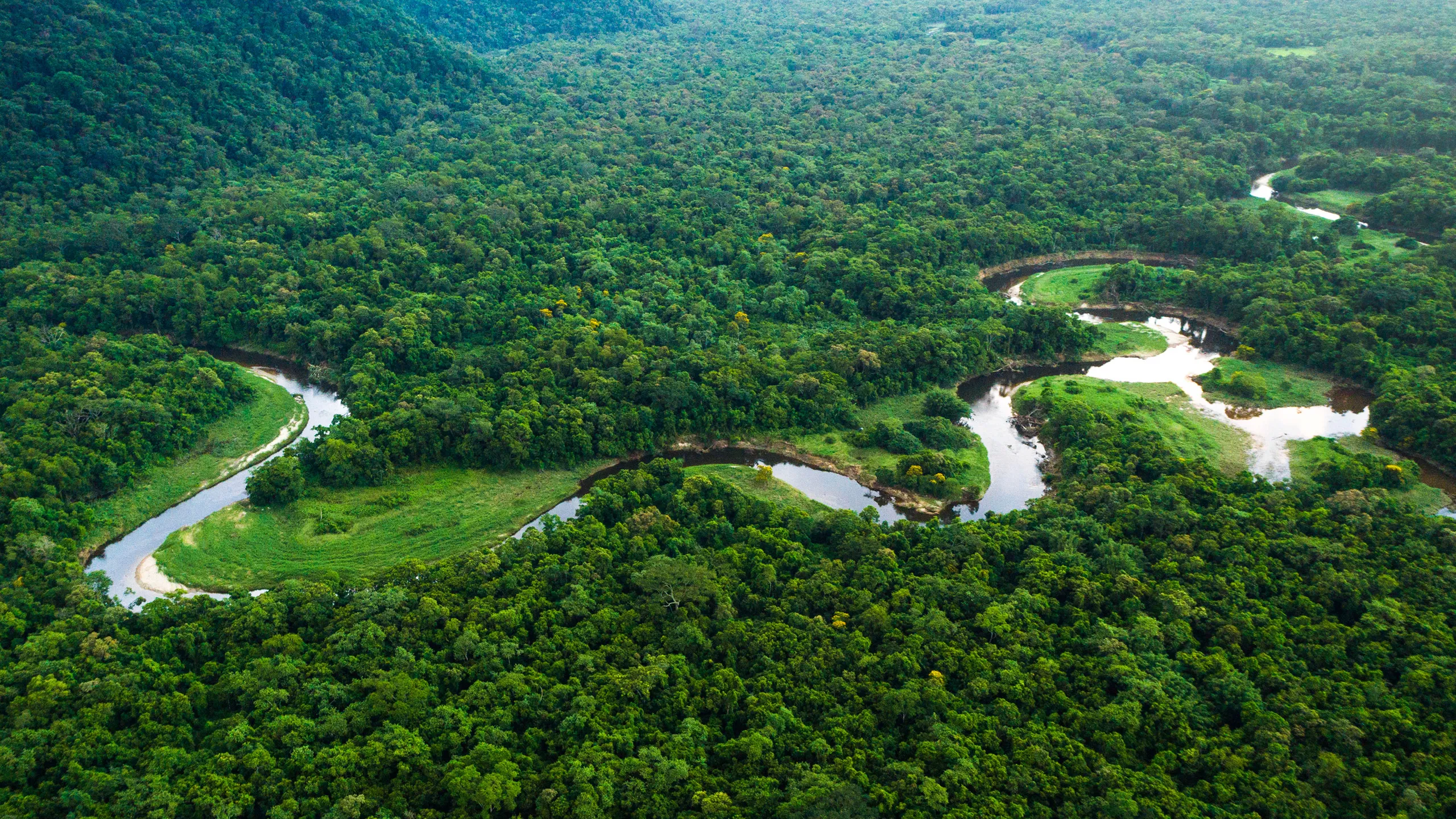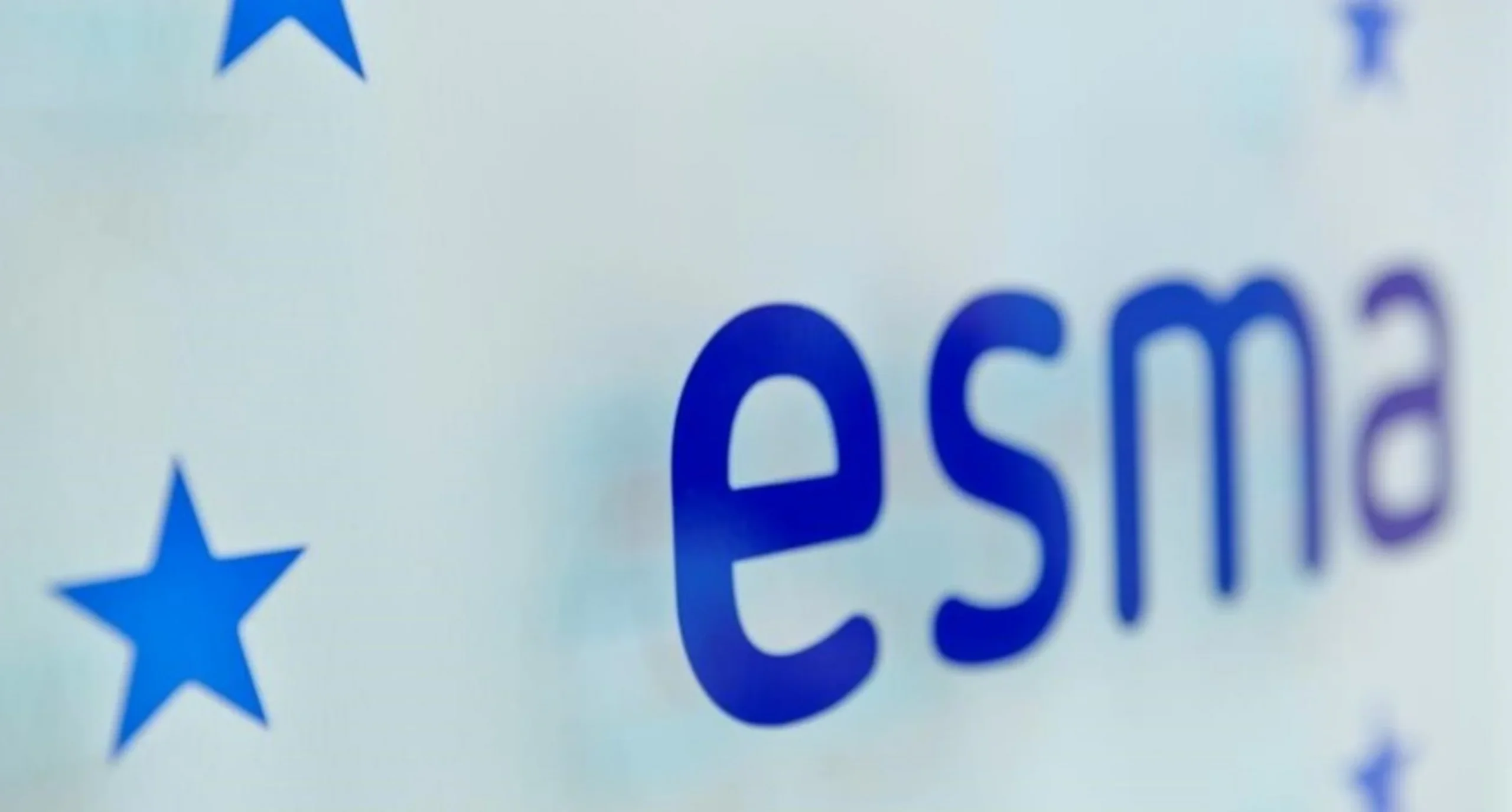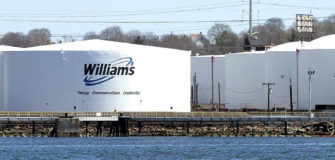Chandra Stevens with Stephen Keppel Live at Cannes Lions Festival on How Brands Encourage Sustainability | Microsoft | PVBLIC Foundation – ESG News
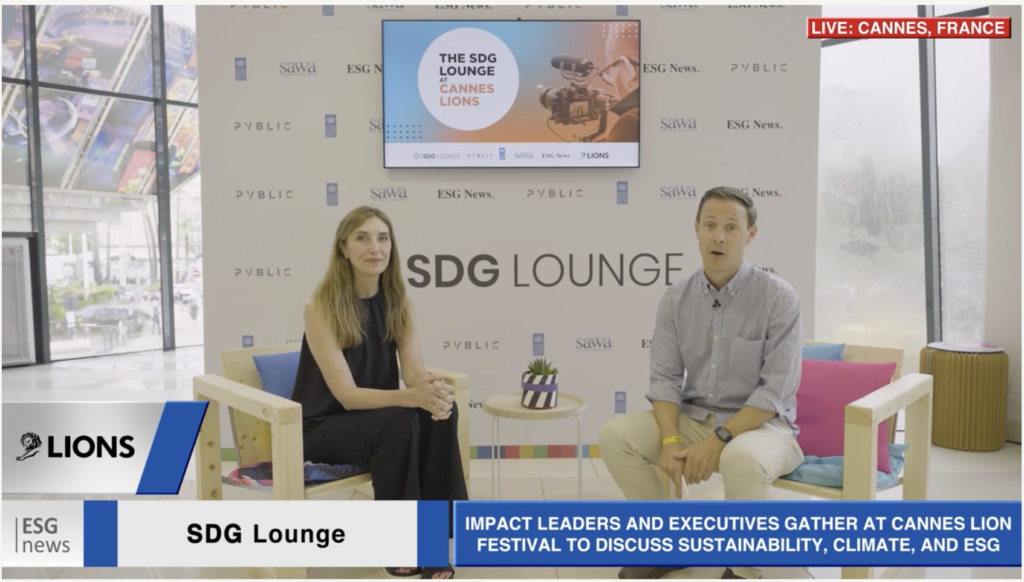
Public-Private Partners convene at Cannes for launch of SDG Lounge at International Creative Festival hosted by SAWA, UNDP, PVBLIC and ESG News
INTERVIEW TRANSCRIPTS:
Chandra Stevens,Global Director,Emerging Solutions for Customer Experience at Microsoft with Stephen Keppel, President PVBLIC Foundation
Stephen Keppel, President PVBLIC (00:00):
Hello, and welcome to the SDG Lounge at Canne Lion. My name is Steven Keppel. I’m the President of PVBLIC Foundation, and I’m very pleased to be joined by Chandra Stevens. Chandra is the Global Director for Growth Strategy for Customer Experience at Microsoft. Yeah. Chandra, thank you so much for joining us here. Um, let’s get started. Maybe tell us a little bit more about your role at Microsoft.
Chandra Stevens,Global Director, Microsoft (00:22):
Sure. No, and it’s great to be here. Thank you for having me so sure. So what I focus on is really how we can help develop solutions for customer experience, but that resonates across, you know, every type of industry and organization. So really putting that human-centric piece back into how you engage with people, be it via advertising marketing, or, or even through supporters. So we do a lot with UNICEF at this point too, around this, and it’s really helping them better understand those supporters. So they, you know, continue to participate and actually drive donations as well. But, you know, it’s moved from that lens of donor to supporter though, too, which is a great thing. Mm-hmm, <affirmative>, you know, we’re seeing a lot of that here in regards to customer experience. How do you heighten that customer experience? How do you use technology to do that? Big piece of it is of course data, which data even drives sustainability as well. So understanding that metric and then also really being able to take action against that, that data and activate in the right channel, right. Empathy with that human touch to it
Stephen Keppel, President PVBLIC (01:23):
As well. Yeah. And how has your experience at Canne Lion been so far? What are some of the kind of interesting or key themes that you’re seeing emerge this week?
Chandra Stevens,Global Director, Microsoft (01:31):
Yeah, so a lot of key things have been definitely sustainability mm-hmm <affirmative> um, purpose is the other, again, more around customer experience because it is a hot topic, but into some other new and interesting channels too. Of course a metaverse is a hot topic here too. Yeah. That’s been coming up and we’ve been doing some things in that space too, and there’s a lot of interesting things you can do with that as well. If you think about it from experience and engaging, even from that diversity equity and inclusion perspective, too, I am working with one organization, a small firm out of New York, and they’re actually using metaverse to be able to have people understand if somebody is being, um, you know, if they’re talking in the wrong tone or if they are being, you know, not inclusive in that conversation. So by able to put these scenarios together in a metaverse yeah. Different individuals, watch it and say, was that person being inclusive or not? Mm-hmm <affirmative> and then it’s very interesting because then the different people who see it will take a survey and you’ll actually see the pockets of within your organization. These people say no, but this group might say, yes mm-hmm <affirmative> so it’s then bringing that together. So some interesting things.
Stephen Keppel, President PVBLIC (02:39):
Yeah. Fascinating. Yeah, definitely. There’s a lot of technology focused conversations happening, but as you mentioned, sustainability, you know, seems to be a key theme. Um, maybe talk a little bit about how can brands encourage sustainability, um, and then also reward their customers to help along in the effort.
Chandra Stevens,Global Director, Microsoft (02:58):
Yeah. Yeah. So, I mean, that is a big thing, especially as you start to look at some of the new target audience that you wanna recruit, even for talent in your organization, as well as that direct consumer client supporter, because you know, it all is very much now the mindset too, is individuals, consumers also want to work with organizations that are green or doing more for the environment. So, you know, how do you bring that out in your brand and really stand behind it? Not just say it yeah. But deliver on it. So what I’ve seen, uh, for example, at Unilever is when I’ve seen where they’ll, even though they’re CPG company, if you think about it, a lot of their brands are in the type of containers, the shampoo bottle mm-hmm, <affirmative> the, you know, the different bottles, but what they do, then they have campaigns to say, you know, this is made from throughout that whole value chain, how it was, you know, the raw material came from through to the distribution and through to the, you know, production of it. But also they’re doing this outreach campaign to say, we want you to recycle these, you know, products and in doing so, you know, we’re gonna make you a loyalist and we’ll also highlight what you’re doing. So it’s a lot of also driving that acknowledgement of the individuals that do it and asking them to take it, you know, pay it forward to others. That might be in their, what I call tribes. Right. They’re social tribe. Mm-hmm <affirmative> as well. So that that’s one way I’ve seen them, them trying to do that
Stephen Keppel, President PVBLIC (04:19):
Too. Interesting. So you give the Unilever example, talk about like Microsoft’s role in that and, and your role, your work in that. How does that work?
Chandra Stevens,Global Director, Microsoft (04:26):
So a lot of what, you know, we’ve been doing, especially, you know, over a decade, we’ve been already doing innovation and sustainability because as you think about it, there’s so many aspects of it, right? So it could be your facility, you’re building your infrastructure. Uh, it’s also throughout that value chain. So when we’ve built out even a sustainability cloud now, and where we really start with that too, is around intelligence that comes through the data because measuring your impact of sustainability is a very hard thing to measure right now. Yeah. Yeah. So we’re enabling organizations to centralize and bring in that data that could be around carbon emissions. It could be around business travel. So how much travel they have and how much is that, you know, affecting the environment as well, as well as in their buildings and facilities. So, you know, water management, energy efficiency in those facilities.
Chandra Stevens,Global Director, Microsoft (05:15):
So what we’re able to do that we bring the data together. So you can actually report and see the metrics. We can take it to the next level where we have out of the box formulas or calculations. So it’ll then easily automate that to say, this is where you stand, so you can measure it. But then in addition to it, we’ve really seen a big uptick as you move from what has been on premise type of system activities and technology, moving that to the cloud. So we’re seeing improvement in efficiency. We’ve done that ourselves, right? We’ve run on a big data center and big cloud. Yeah. And through the, the efficiencies we’re seeing are about, you know, 98% efficiency in carbon emission, which is, oh, wow, great. You know, great number or percentage, and then 93% for energy. So it’s, it’s a great thing that you can do to move and move to the cloud, to get the efficiency.
Chandra Stevens,Global Director, Microsoft (06:02):
Yeah. Plus we built it into our own cloud environment, so we we’ve built all those efficiencies in there. And then the last area too, is really, you know, being able to collaborate around the organization. So if you’re a global organization, yeah. I might acquire a company in Chile, but I need to collaborate with that person, understand what those sustainability rules regulations are in that country. Mm-hmm <affirmative> to then bring it into the larger mix of the organization and then bring that information in to see how they’re, you know, landing as I acquire a new company. And then the last thing is really around the whole, um, value chain, right? Yeah. So from, you know, how do you represent and how do you understand that the raw materials are, are, you know, done in a sustainable way or green, and then also from there taking it into the production aspect. So how do you do the production? We’re seeing a lot where we, again, can automate a lot of that on-prem production to make it much more efficient and reduce all the carbon effect, the emissions, the energy. And then lastly, how do you get that out to the distribution channel and share that across your vendors and ensure those vendors are green as
Stephen Keppel, President PVBLIC (07:06):
Well. Yeah. And so something like the sustainability cloud, how long, you know, does that take to development? How long has that been in the works and like how long has it been out in the market?
Chandra Stevens,Global Director, Microsoft (07:15):
Yeah. Yeah. So it’s been in the works, I would say for approximately two, two and a half years. So, and we launched it just Hmm. Under a year, I’d say that we’ve launched it. So, but we’re, definitely’s relatively new. Yeah. Relatively new. But a lot of the technology that we’ve put together and fully integrated have been, you know, our core foundations of what we do at Microsoft
Stephen Keppel, President PVBLIC (07:37):
Too. Mm-hmm <affirmative> yeah. Amazing. Um, as you mentioned earlier, another key theme here at con lions from brands has been purpose.
Chandra Stevens,Global Director, Microsoft (07:44):
Yes. Yeah.
Stephen Keppel, President PVBLIC (07:45):
Talk a lot. Talk, talk a little bit about, you know, how, how you think about purpose as somebody who’s acquiring companies, leading teams mm-hmm <affirmative> and then also how Microsoft as a global, you know, corporation thinks about purpose and, and includes it in its business activities.
Chandra Stevens,Global Director, Microsoft (08:00):
Right. Right. Well, so, you know, the way we look at purpose as a company is also how we approach it with our customers and in the, in the technology. And so when we think about purpose, it’s not just about your brand in, in my mind. And the way I talk to it is that purpose is three things it’s around the purpose of your product or service, but is it being done in a sustainable way, but is it fulfilling the value of what that product or service is supposed to land? Mm-hmm, <affirmative>, that’s one purpose. The second is purpose around when you bring talent and people into your organization, you know, are you landing a culture of purpose for them that makes them feel included, you know, diversification, you know, uh, equity throughout the organization, but really coming together to work behind an organization that has a strong purpose. And that is, you know, part of the sustainability part of it. Mm-hmm, <affirmative>, it’s also diversity and inclusion. It’s all of those things. So, and then the third is that, that pure, you know, what is your brand purpose? So, you know, and, and way we look at it too, and this has been our brand statement for quite a while is around, you know, enabling people to do more with technology, to reach their goals. And, you know, that’s what we’re definitely trying to do and continue to do around sustainability and the environment as well.
Stephen Keppel, President PVBLIC (09:07):
Mm-hmm <affirmative> yeah. Yeah. You mentioned using technology to reach your goals. We’re here at the SDG lounge, you know, highlighting the 17 sustainable development goals. Mm-hmm <affirmative>, um, also here with a number of creatives and brand leaders and tech and data leaders, uh, what can we, as a collective unit, right. Again, of creative tech data. Yeah. What can we do to accelerate the achievement of the 17 sustainable
Chandra Stevens,Global Director, Microsoft (09:31):
Development goals? Yeah. So, you know, in my mind, it’s you start with the data first, right? Because it’s so hard to measure, but I need all the data from the different parts of my organization, but I also need to share that data in a collaborative way across the organization. So everybody has the same view of it. So how do you bring the data together? So you understand where you are not making impact against those goals. So we can accelerate that, cuz that’s been a big problem to actually centralize that data. Mm-hmm <affirmative> so that’s one area. And then, you know, as we think about it for the creatives, uh, as well, and now all of this is still utilizing technology. So, you know, the cloud or what we have a customer data platform to bring that data together about the different constituents or the supporters or your consumers that we bring together, but it’s still, how do you activate that?
Chandra Stevens,Global Director, Microsoft (10:15):
And to me, the activation is, is through the creative mm-hmm <affirmative> so how does the creative activate it, but you know, understanding that individual to make it more human centric, because I might be more interested in one area of the SDG goals yeah. Or based on, you know, where I’m living or, you know, my organization, how do you know that about me? So the more data you can understand and understand me to then make it very personalized in that outreach is key and that’s how the creatives can help, you know, how do I take that understanding of the individual and build it into my creative content to really make it, you know, actionable and make an impact through the creative.
Stephen Keppel, President PVBLIC (10:53):
Yeah, no, I love that. I mean, a key thing at public foundation is how do we use media data technology yeah. To achieve this STGs and sustainability. Um, so yeah. Great to hear that. So it’s so involved in your work and a lot that’s happening here. Um, so here we are in the south of France, um, you know, having a lot of meetings and attending sessions and conferences, um, approaching the end of the week. What’s one key thing that you’ll take back home with you. Um, just kind of, you know, personally, but also for your team and, and the teams and, and people you work with.
Chandra Stevens,Global Director, Microsoft (11:22):
Yeah. You know, it’s, it’s been really interesting cuz the last time I was here was five years ago too. Right. And of course we haven’t had a, a can, uh, due to COVID yeah. In the recent years. So what I’ve really found is this shift that it, there is a lot more technology coming to into this and that the true and pure, you know, creatives and the CMOs, their roles are changing very much. So a CMO isn’t just about marketing anymore. It’s bringing on technology, it’s becoming a data expert too. So it’s really how the role is changing. So how do you engage with that in mind? And when you’re trying to, you know, work with them, understand it’s not just, you know, when you think about customer experience too, it’s not just through the marketing or the individual, but it’s across all your touch points too.
Chandra Stevens,Global Director, Microsoft (12:06):
So if I have a customer care organization, I wanna lead with empathy in my customer care. So how do I leverage this technology there, but that also should go back to marketing as well. And it’s another area where I can potentially engage or drive additional support or drive additional up cross sell upsell of your, you know, per brand and then even taking it into, you know, if you’re in a sales type of organization too, how do I take it into sales, but bringing it around and in my mind, what I’m taking away to it’s really the shift from customer experience is becoming a commodity, but it’s moving to the business of experience where everybody’s role in an organization is about experience in that human centric engagement.
Stephen Keppel, President PVBLIC (12:46):
Yeah. No, I love that. Um, yeah. You know, the evolution of customer experience, um, how do we, how do we really think about data in all aspects of what we do even creative and, and especially impact.
Chandra Stevens,Global Director, Microsoft (12:57):
So yeah. And it’s really activating it too, because you know, you can get the data, you can get the insights, but without activating it, there’s not that much ROI. Yeah,
Stephen Keppel, President PVBLIC (13:05):
Yeah, yeah, no, I love that. Chandra. Thank you so much for being here at SDG lounge for sharing your, your insights and ideas. Um, we look forward to yeah. Continuing the conversation.
Chandra Stevens,Global Director, Microsoft (13:15):
Great. Thank you. It’s been fun.


